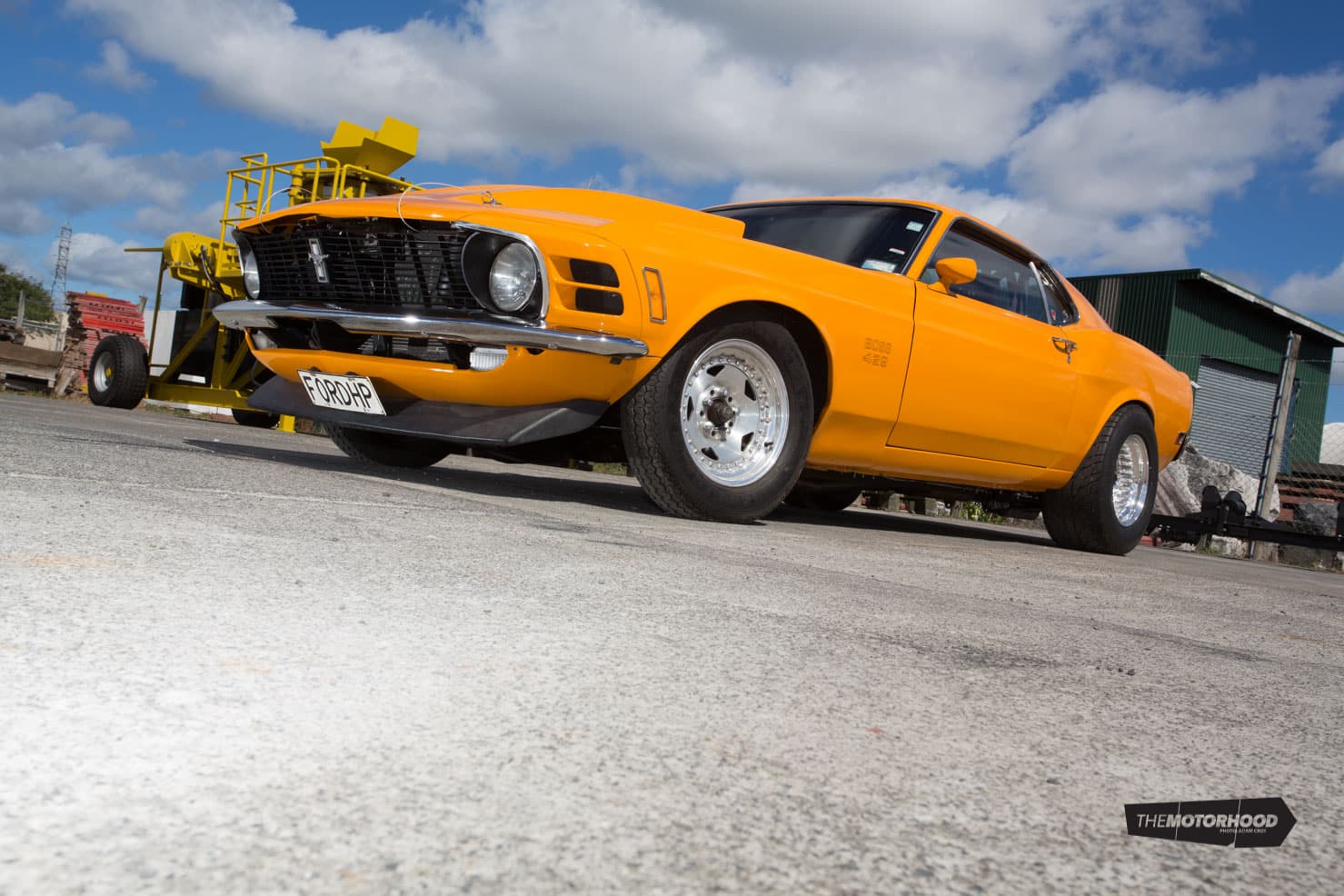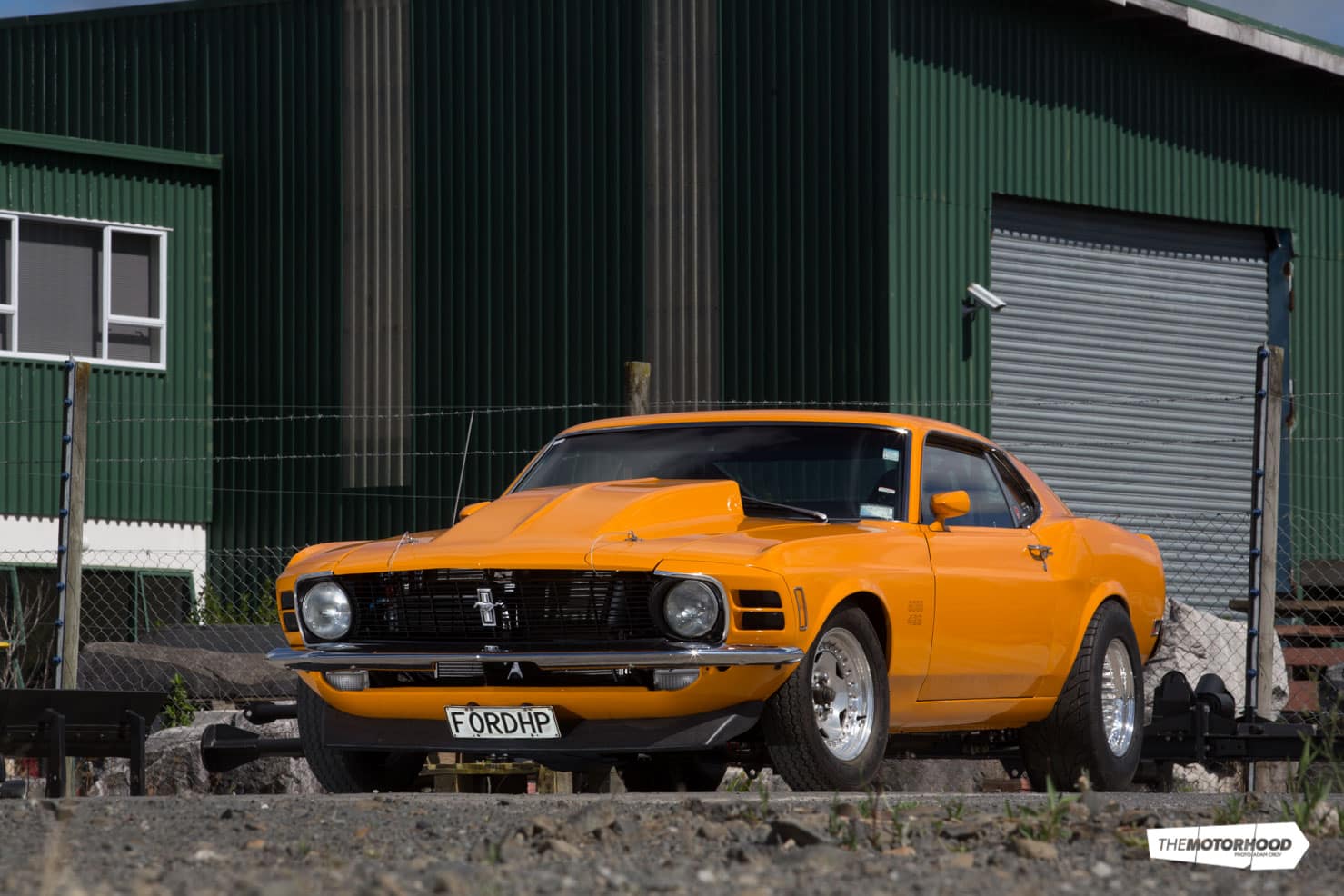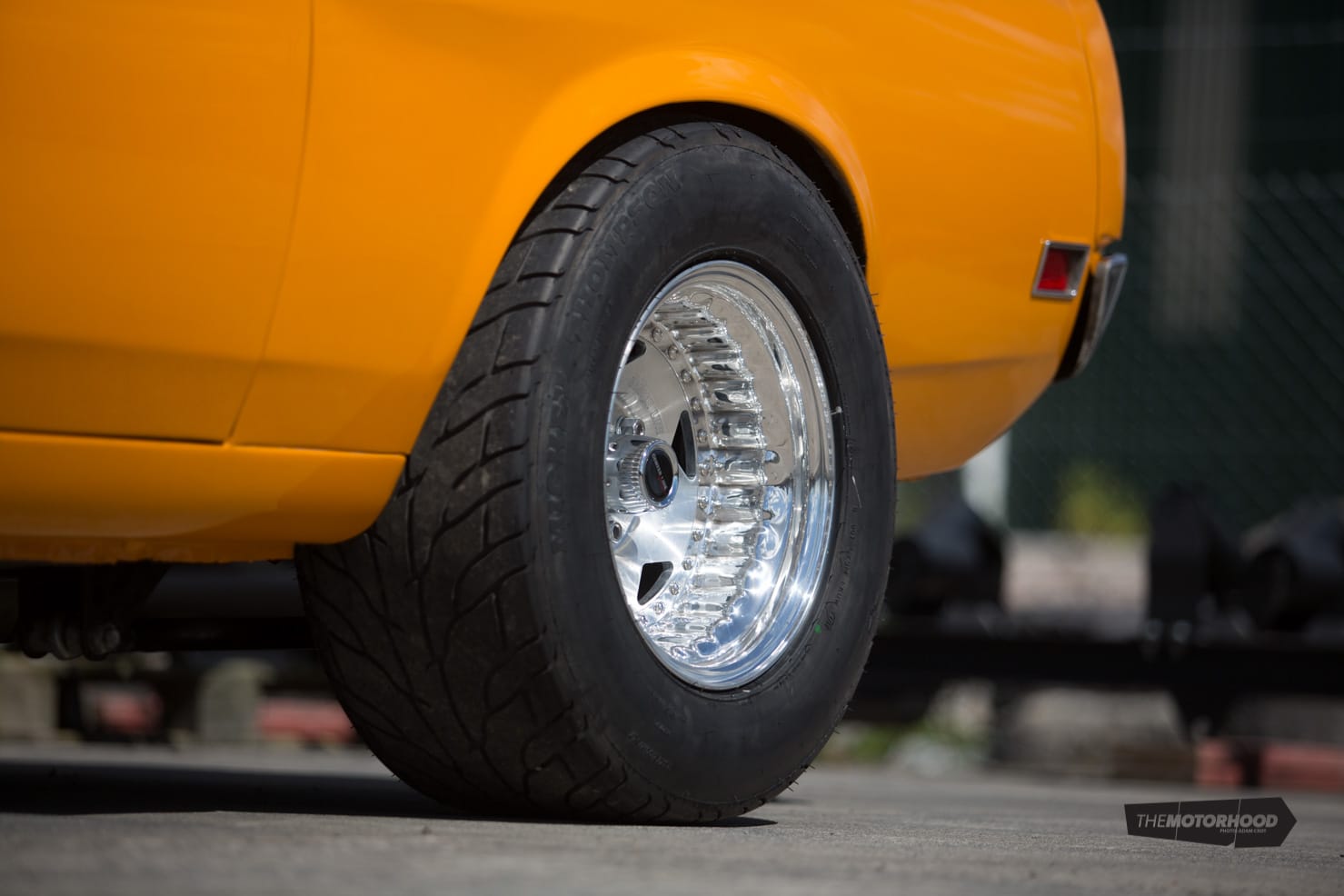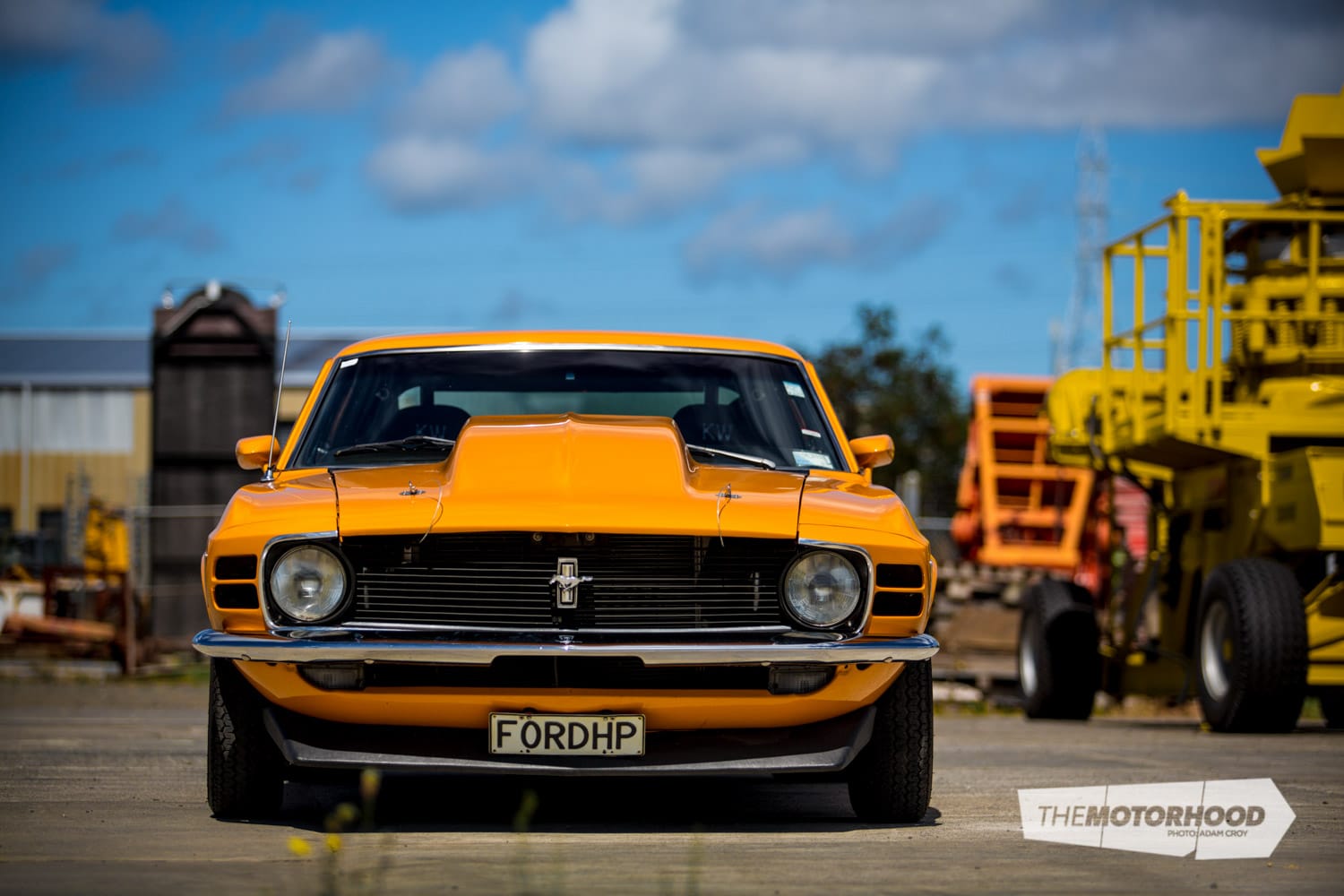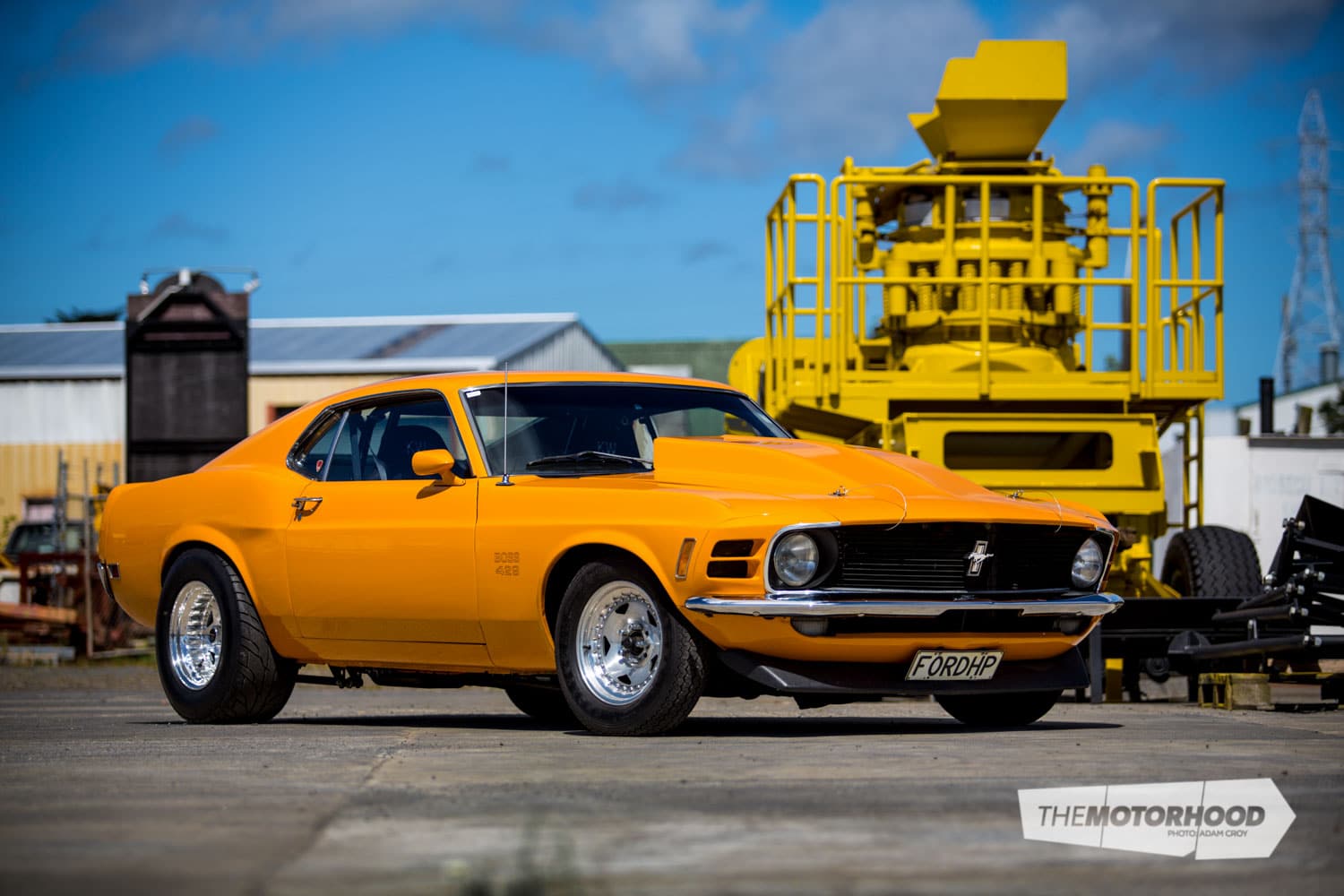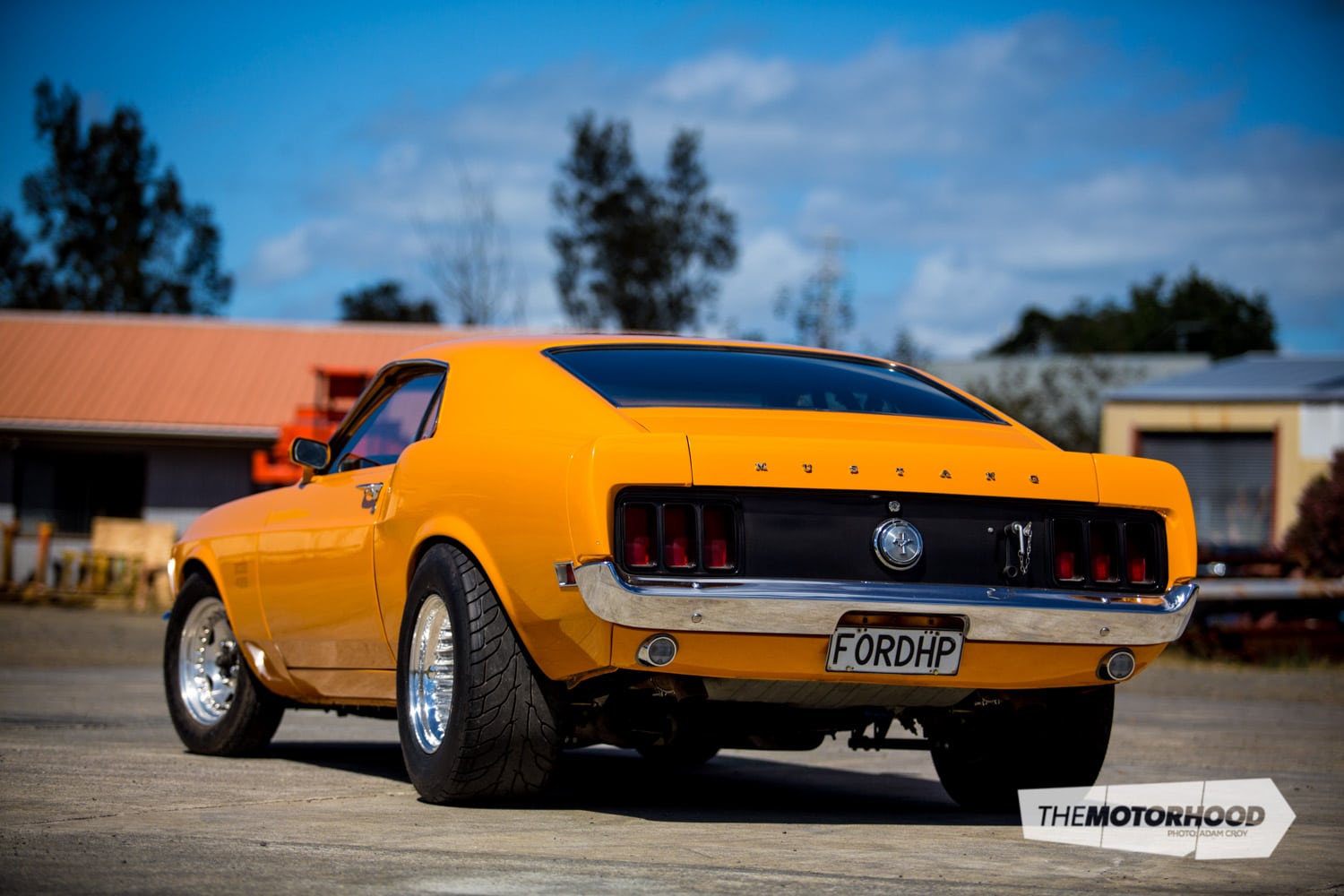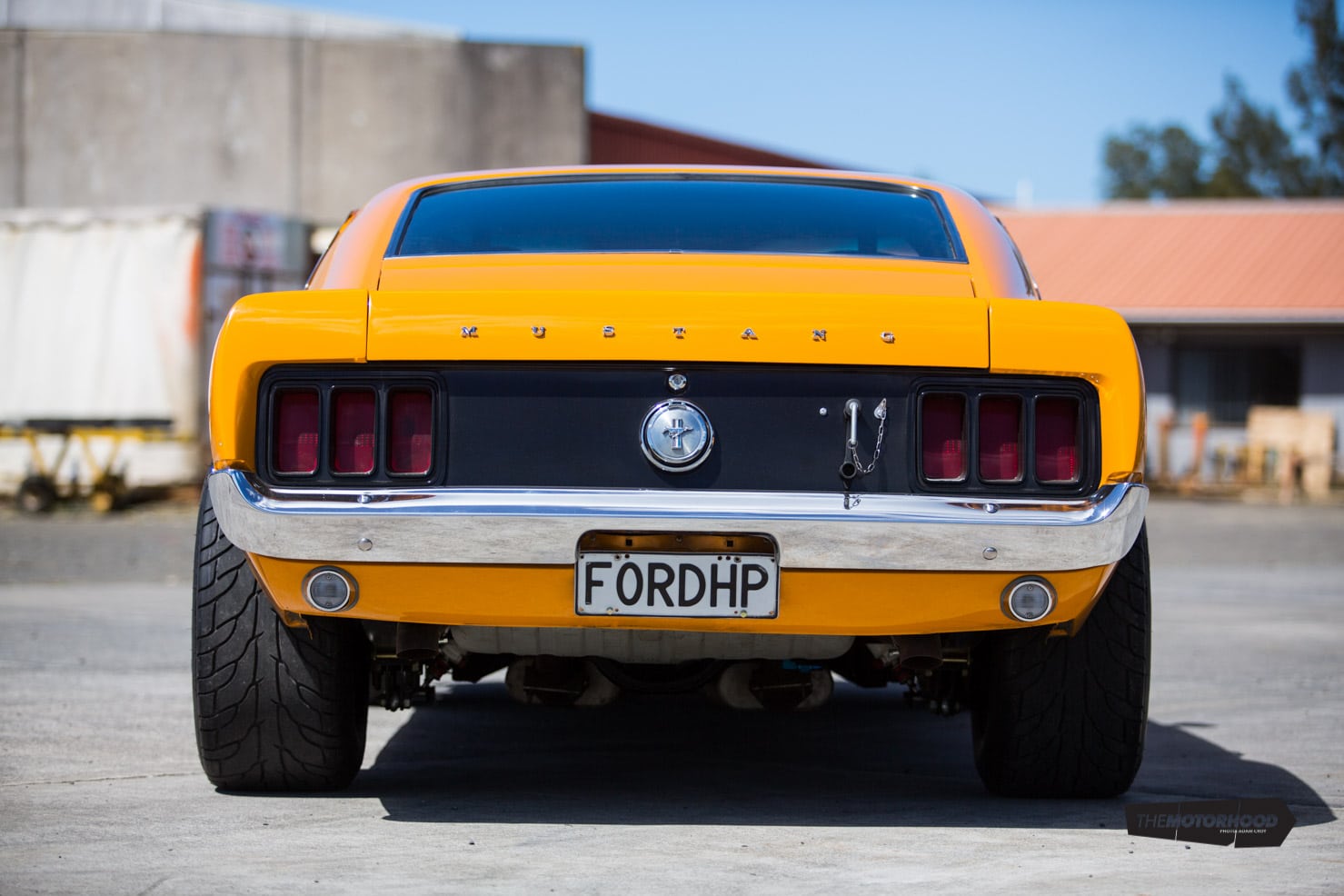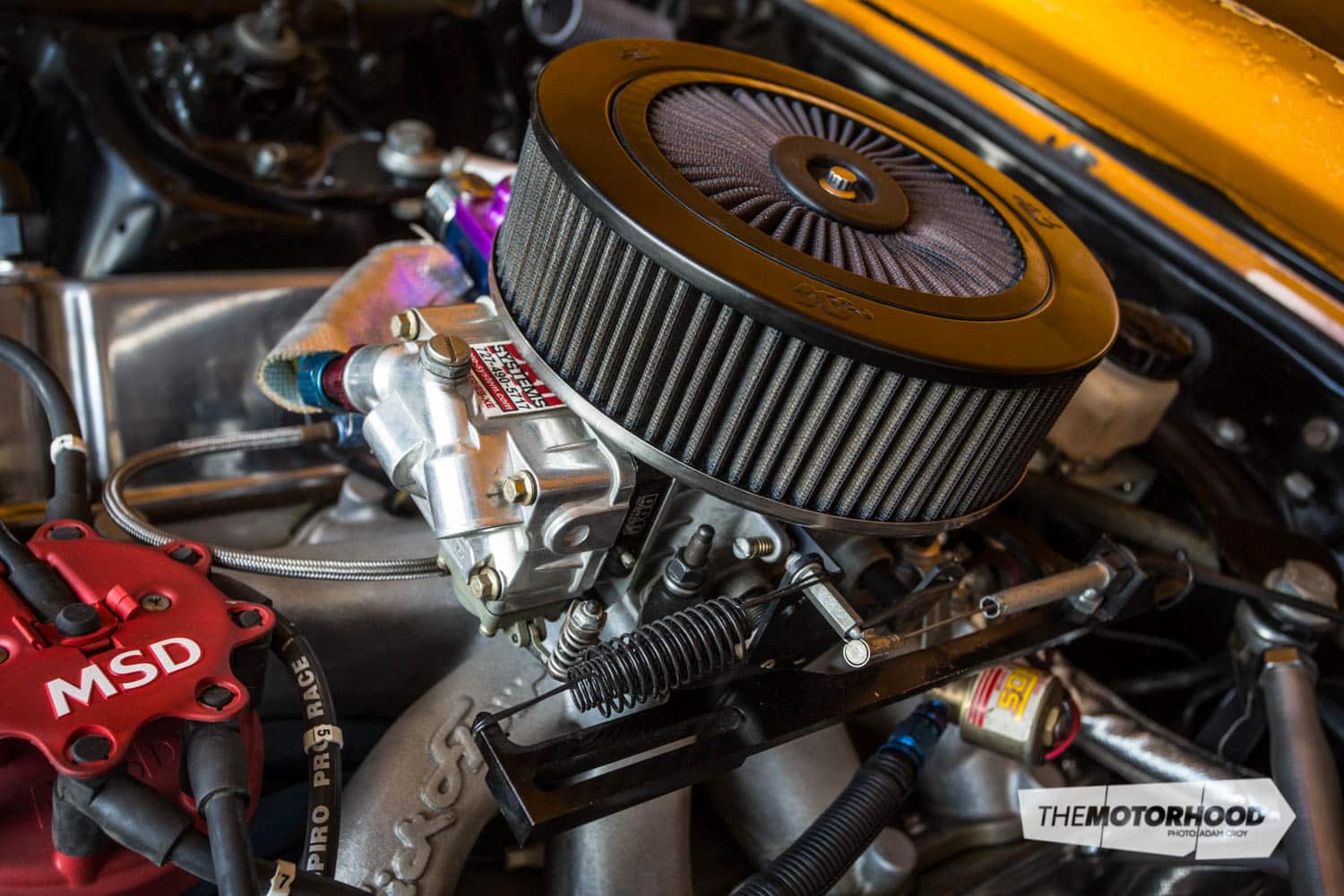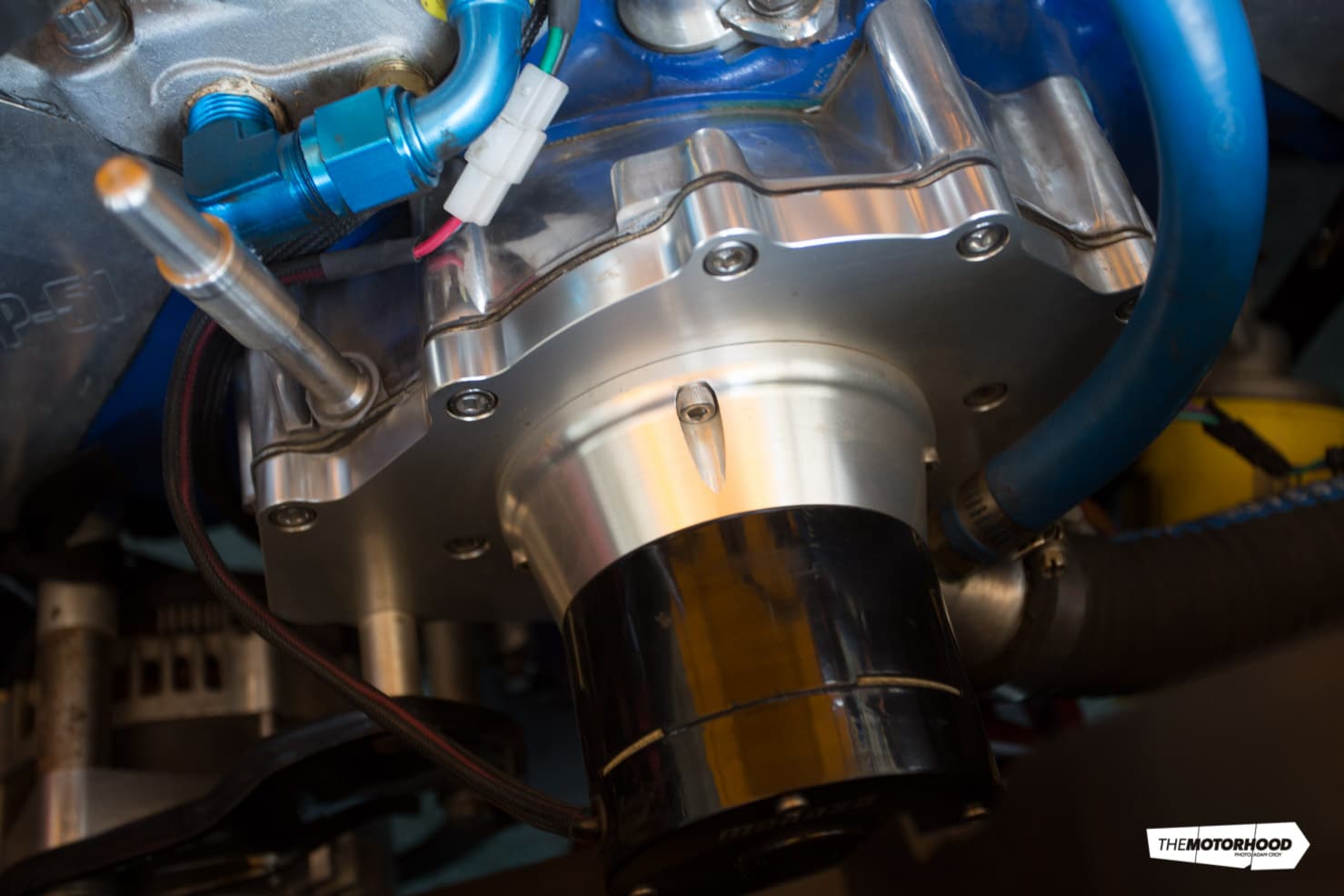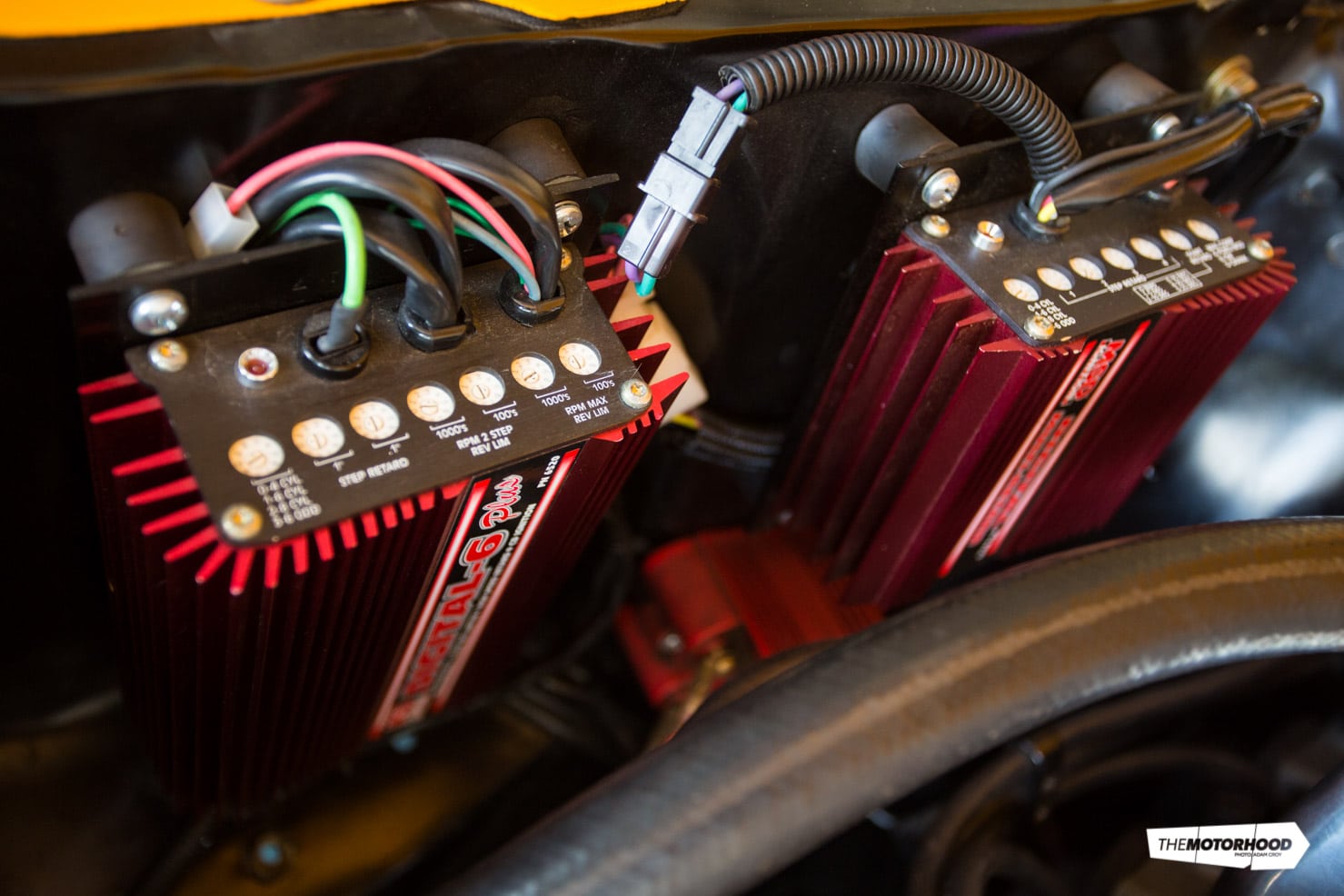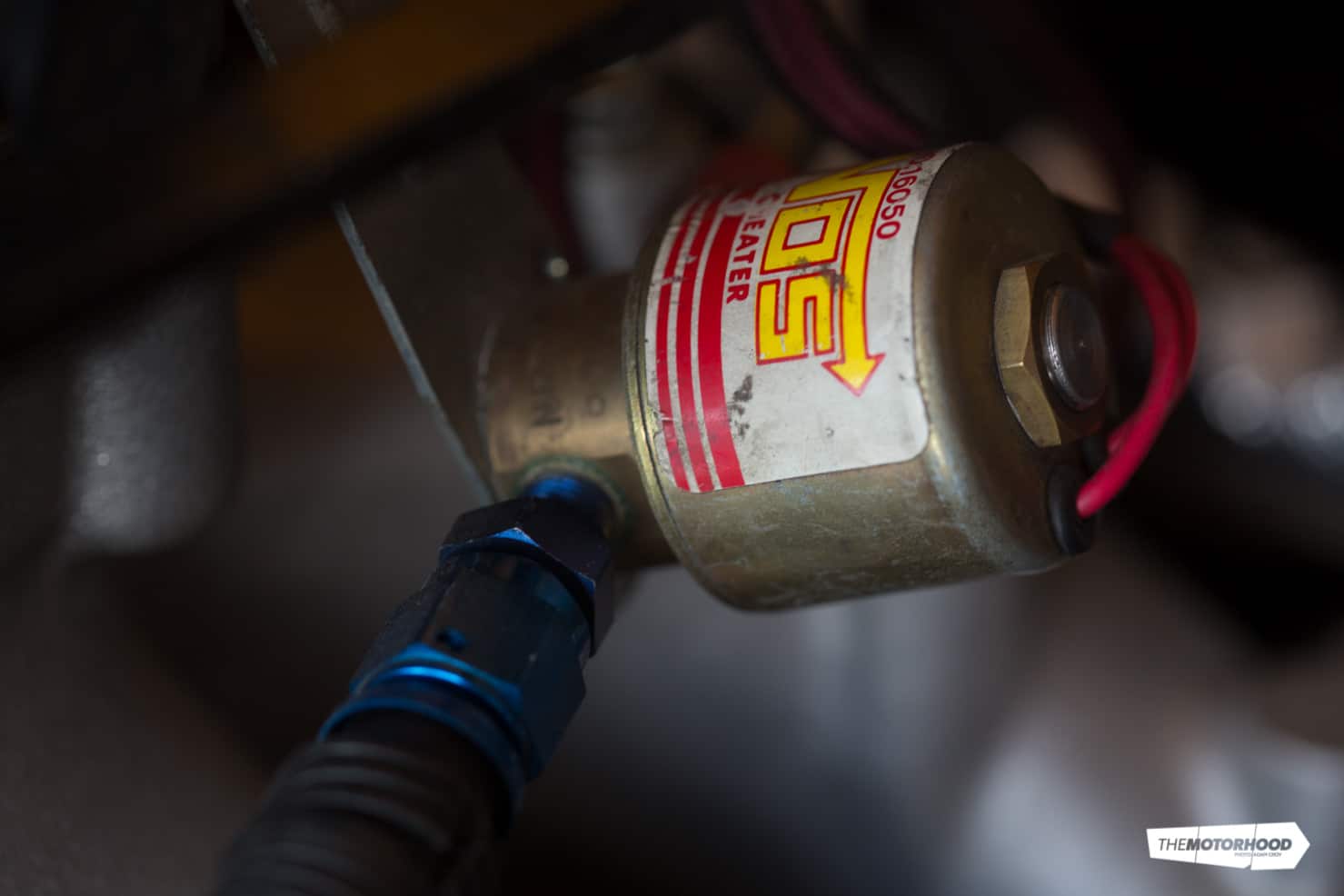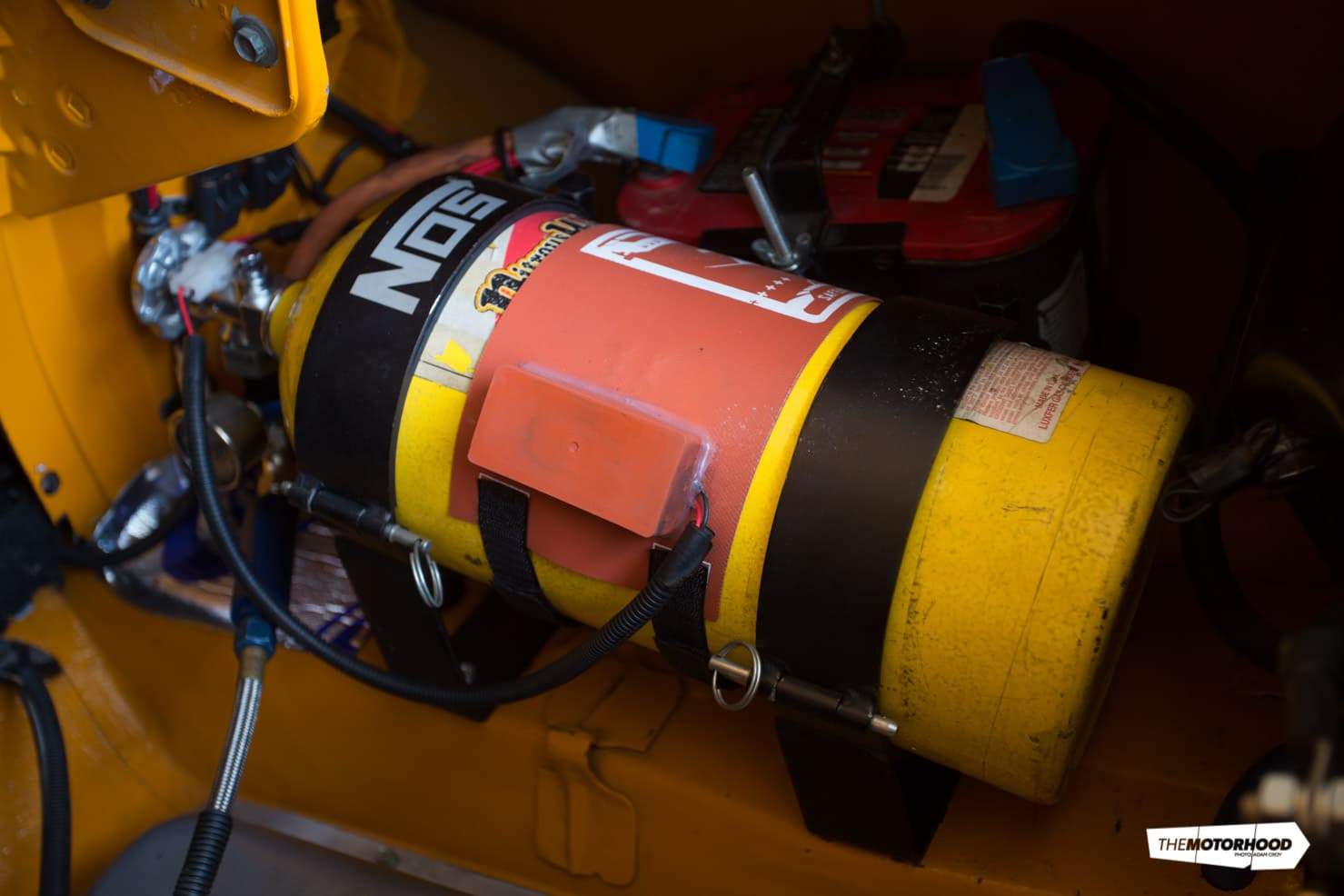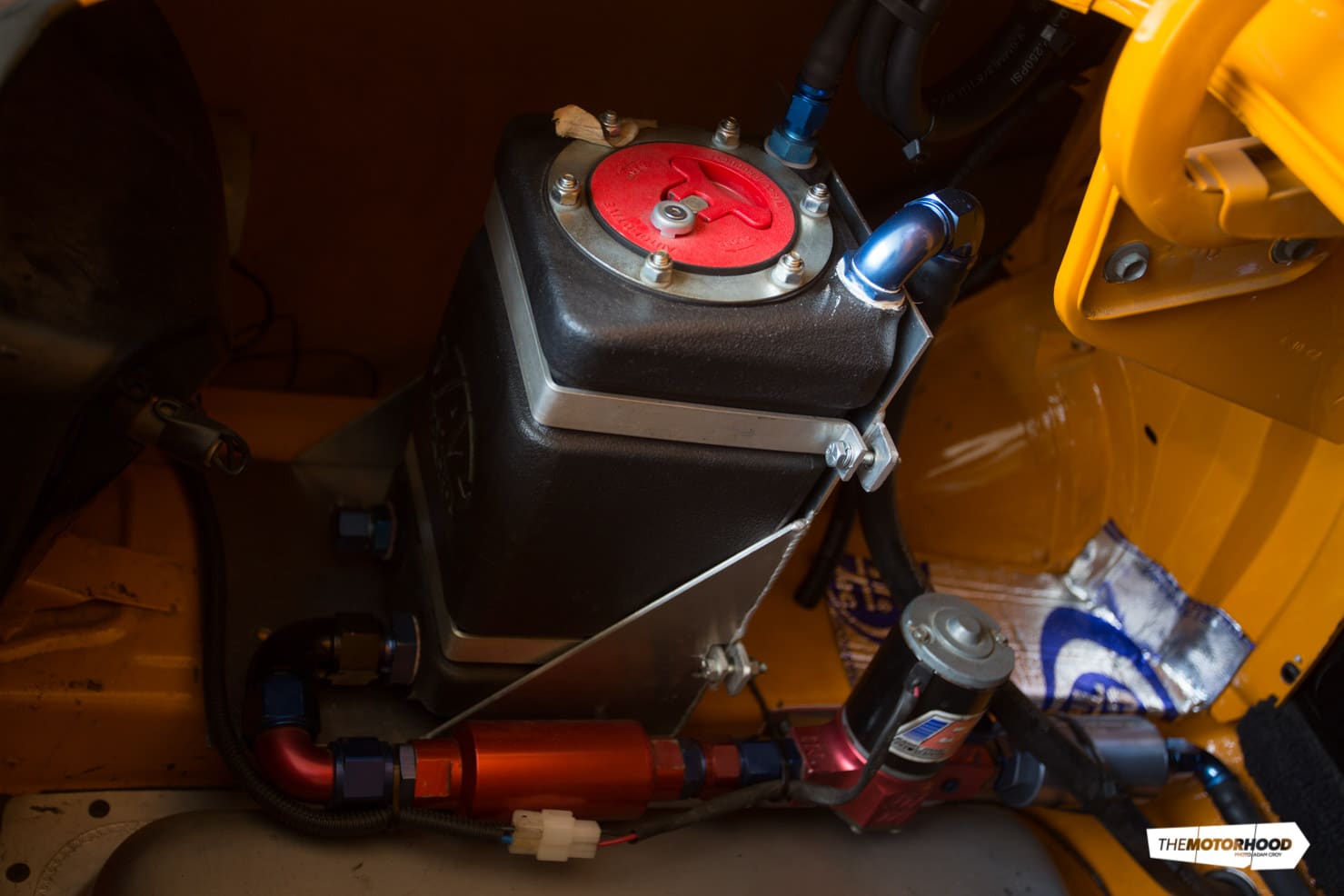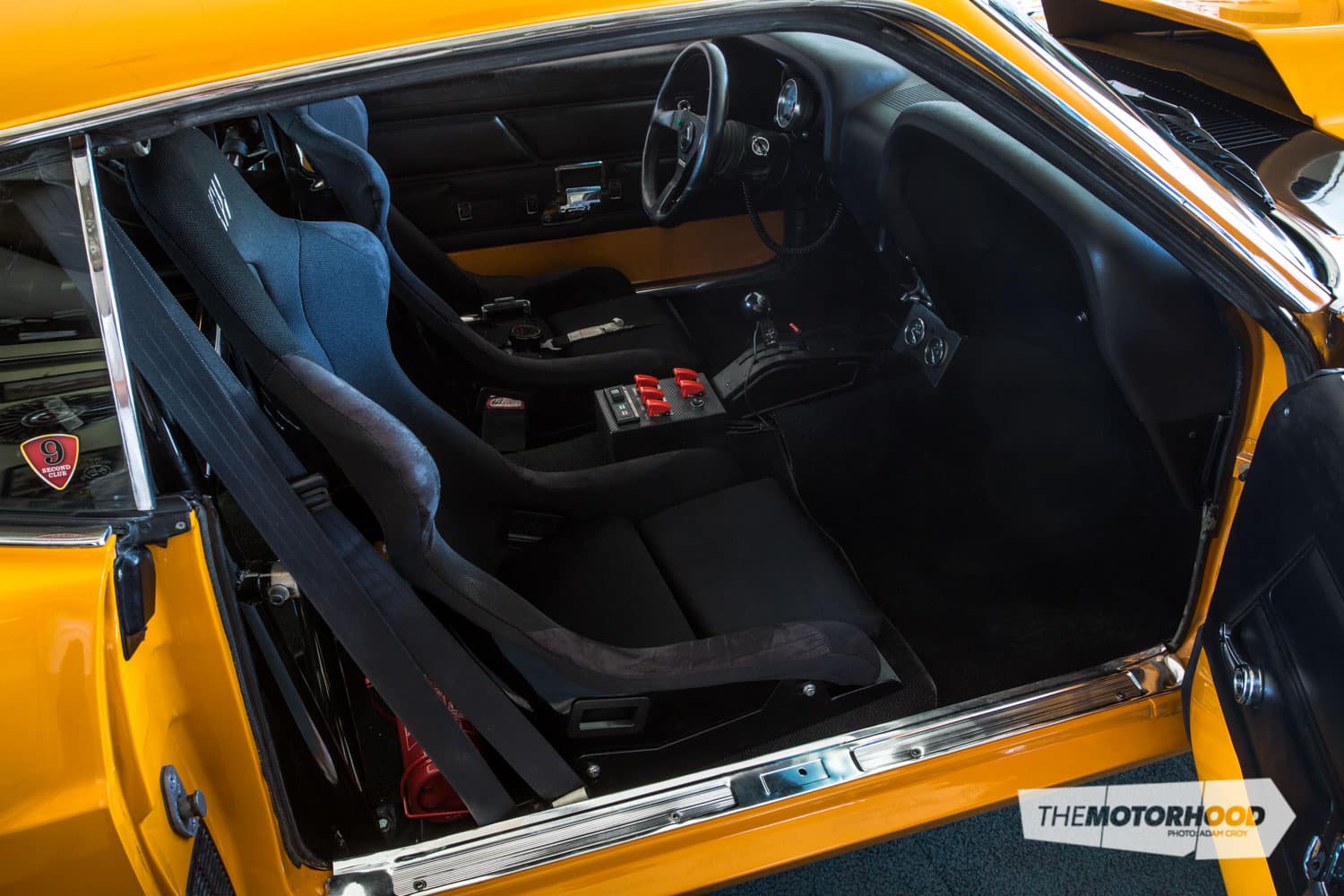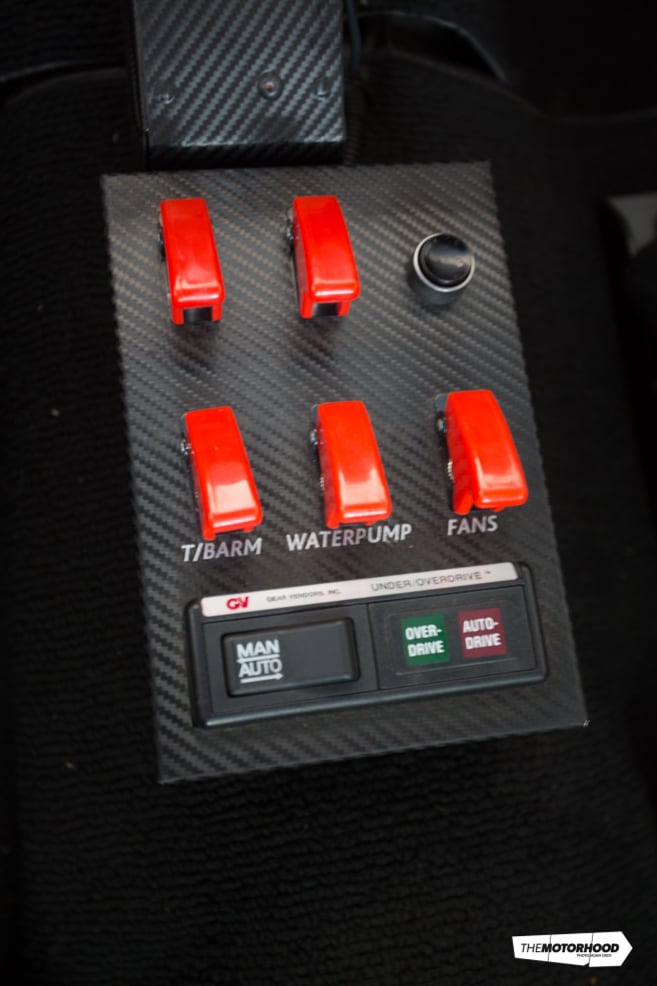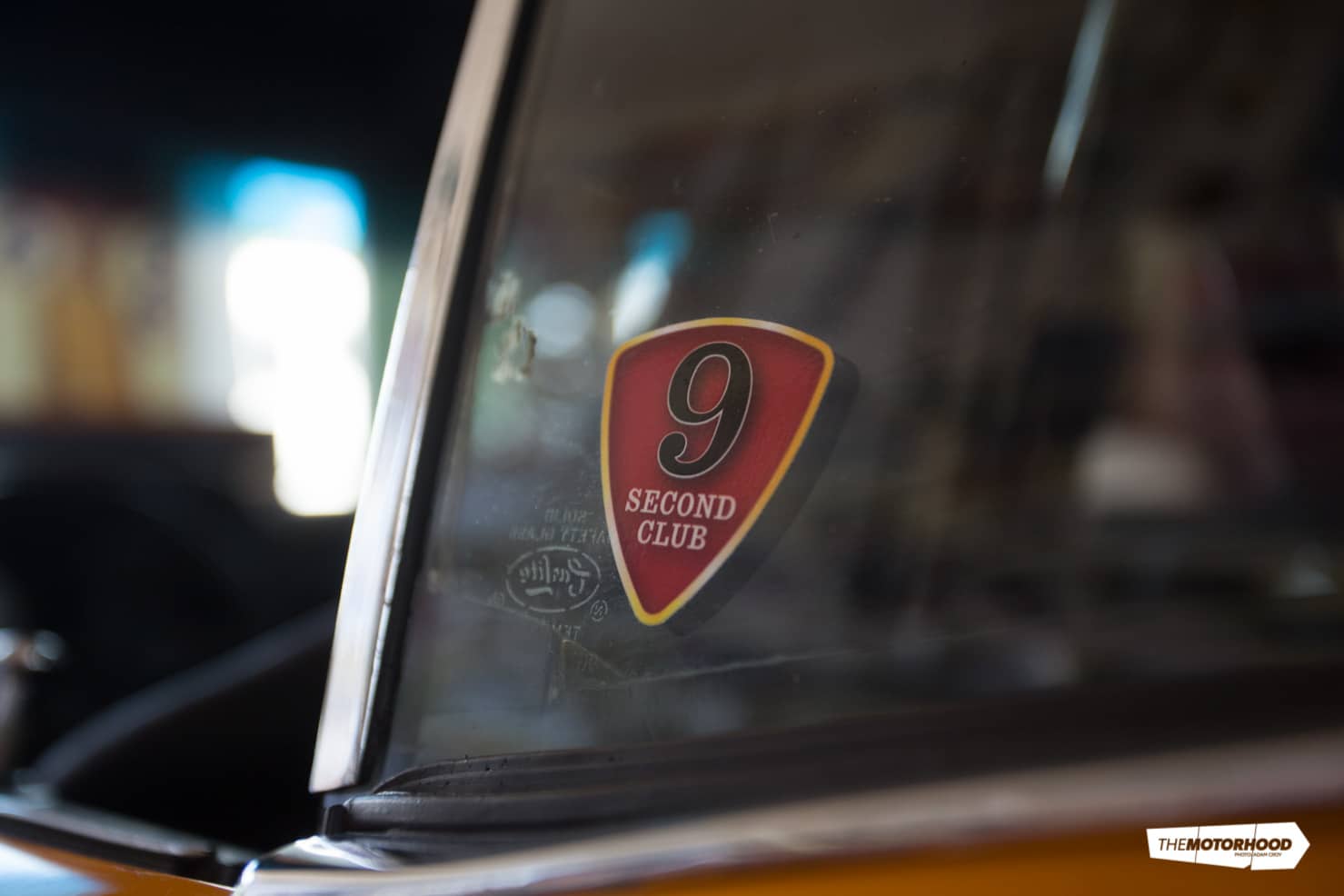data-animation-override>
“It may be one of the most popular colours amongst Mustang restorers, but make no mistake: this Grabber Orange ’70 fastback is not your average resto job”
“I’ll need a hand to unload it from the trailer, and is there enough room to unload there?” are comments we hear a lot when organizing photo shoots, especially when it comes to street cars that double as drag strip weapons. But when sorting out a shoot with West Auckland’s Tony Gera for his nine-second Mustang, the phone call was much different. No talk of trailers, no talk of small fuel tanks, outrageous diff ratios, or under-bonnet temps — just “I’ll be wherever you want me”. In fact, we’re pretty sure that if we had told him the shoot was in Wellington, he’d have just casually told us it might take him a few hours to get there. Yep, this genuine nine-second streeter is truly that driveable, and, while lower quarter mile times would be nice, if they come at the expense of that, Tony’s not interested.
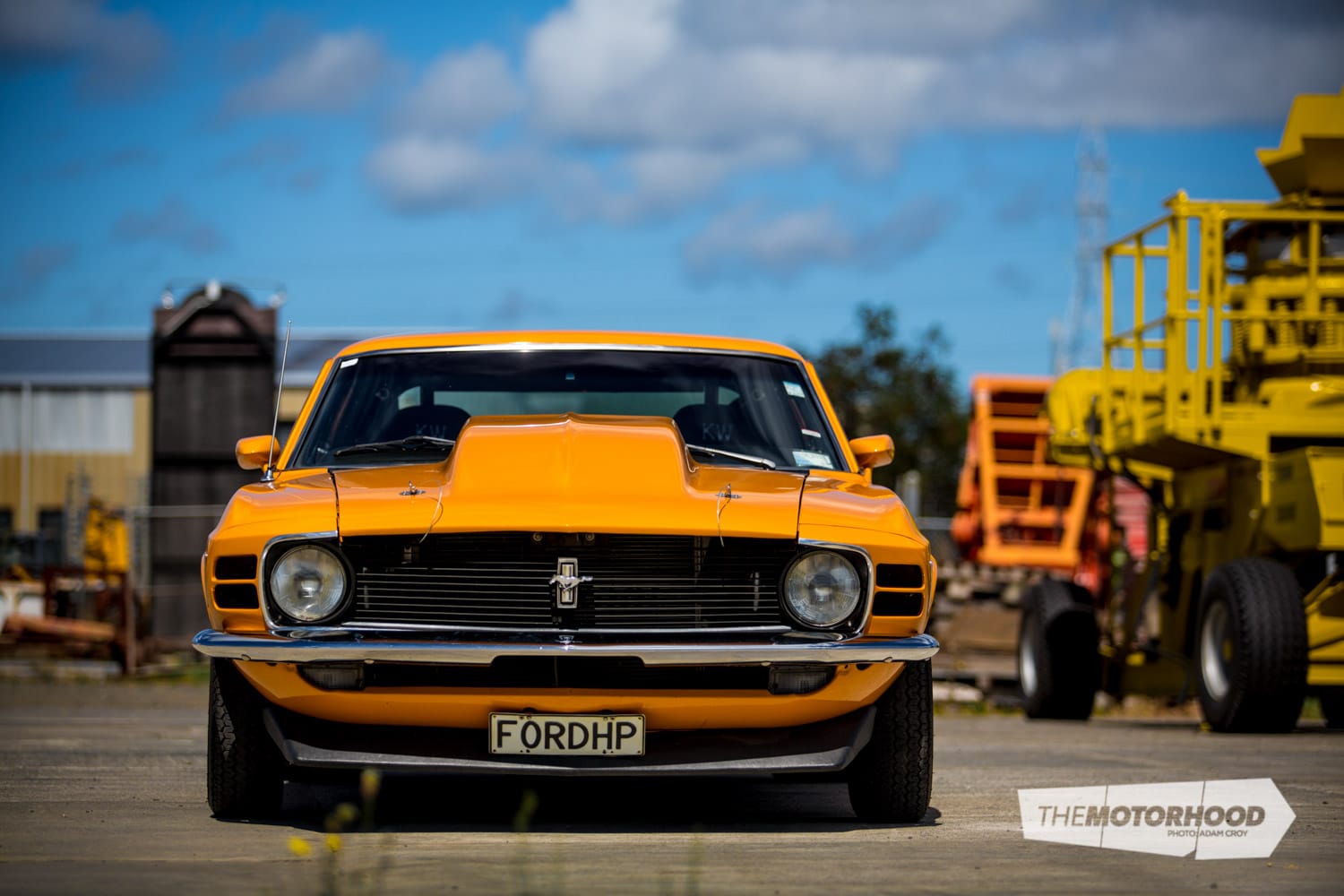
To know how Tony ended up behind the wheel of such a brutal, yet elegant machine, you first must understand the man himself. A born and bred car guy, Tony’s into anything cool, and there’s almost no type of vehicle he hasn’t owned over the years. The common theme among them is that they must be fast. Be it an 11-second flat Ford F100, a 10-second Chev Vega, or an LS-powered late-model Camaro, Tony’s owned it, modified it, and loved it.
Amongst the cars he’s always loved are, as you can guess, 1970 Mustangs. Around 10 years ago, he picked up the car you see here from fellow Westie, and good friend, Mike Dean. Not too long afterwards, the car was at Matamata Panelworks — “Before it became famous,” mentions Tony — getting a few touch-ups. Those few touch-ups turned into a full-on bare-metal strip-down, a bunch of panelwork, and that gorgeous coat of Grabber Orange paint.
“Those guys couldn’t have been better to work with,” says Tony. “I was down there every other week, doing bits and pieces, whatever I could.”
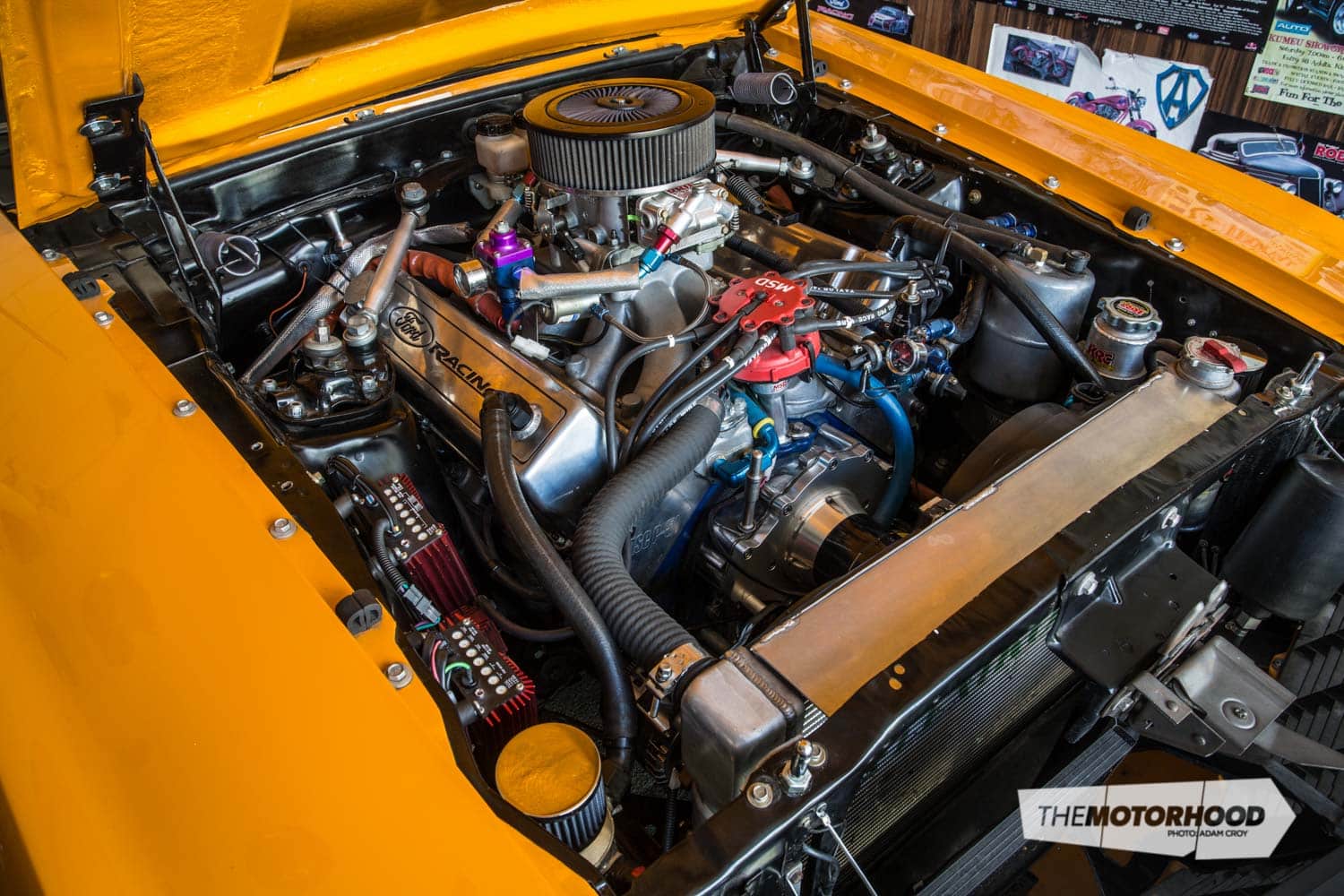
The final outcome of the work at Matamata was a car that looked, for all intents and purposes, like the king of all ’70 Mustangs, a Boss 429. Tony continued that look by dropping a 429 under the hood, and the result was a car that looked so genuine he soon started to field complaints from fellow Mustang owners about inane details on it that only true Boss 429 gurus would know.
Of course, that didn’t deter Tony from rapidly improving the car’s performance. Out came the stock 429, and in went a wild one. Then out came the wild 429, and in went a wilder still 514. A few sideways trips down the drag strip, and far too much time spent with Ford engine builder extraordinaire, Dave Moyle from Pro Street Automotive, and out came the 514 and in went the current street-friendly, yet track-aggressive, 480 cube item.
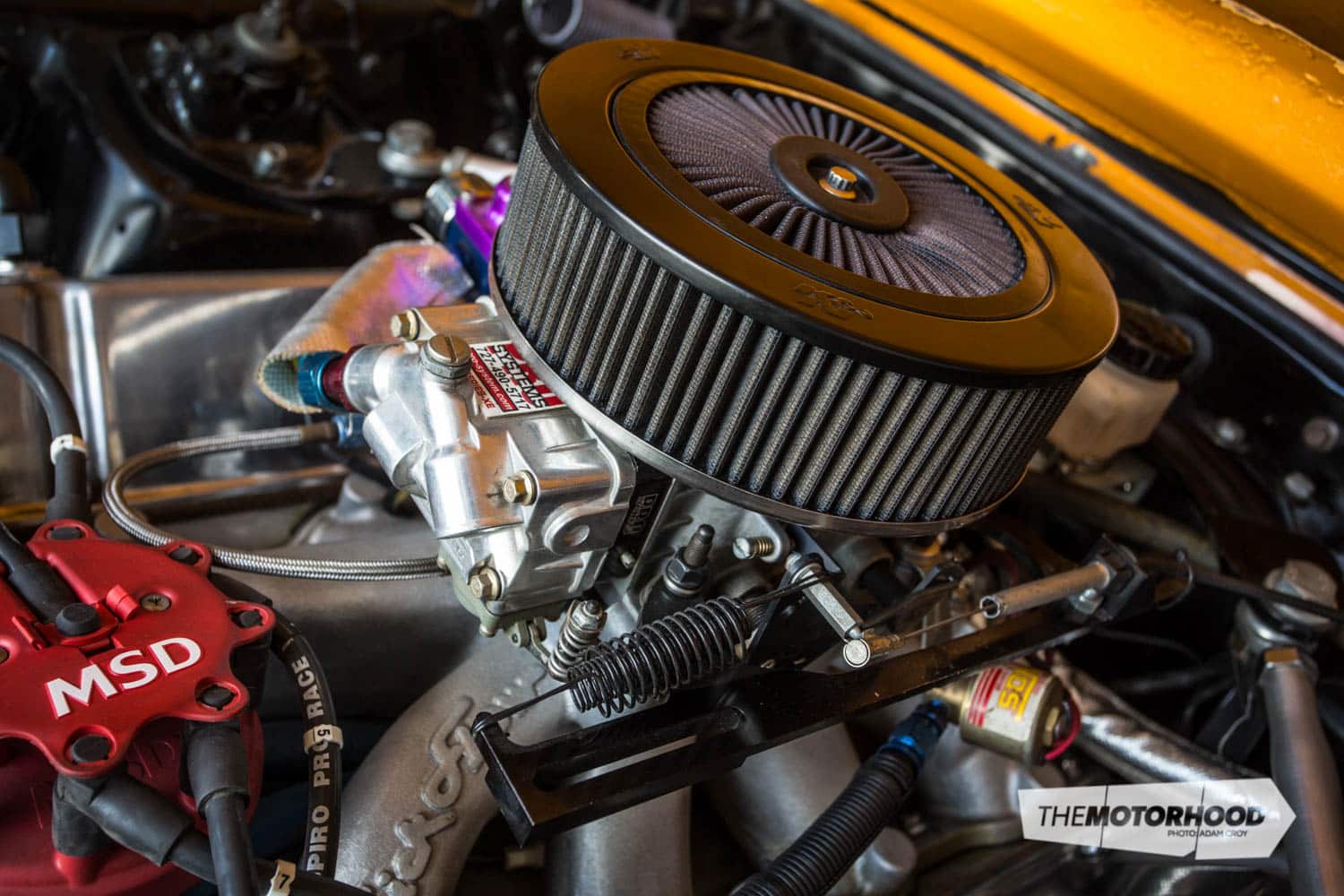
“It’s nothing flash, just a two-bolt mains 429 block with a stock 460 crank and a 0.08-inch overbore,” Tony states modestly of the combo.
Of course, as we know, it’s not quite that easy to make the estimated 600–700hp the car is producing. While Tony assures us that most of it is due more to Dave’s magic touch than anything else, it does use Jon Kaase P51 heads with a solid roller cam ground to Dave’s own specs. Between the heads is a Trick Flow intake manifold fitted with a 1050cfm Pro Systems Dominator carb, and a nitrous plate bolted between. For the electronics side of things, Tony chose to run with tried and tested MSD components, and for the exhaust, opted for two-inch headers to feed into a twin three-inch system.
While Tony may claim the engine components as being nothing flash, clearly they do the job, as not only has the car run a best of 9.73 with just a 140hp shot of nitrous thrown at it, it’s also run 10.20 without the bottle all on ET Street tyres.

Of course, none of this would have happened without a tough driveline, and while Tony may talk down the bits used in the engine, he’s quick to point out that there’s plenty of good parts used in this area, the main components being the ATI SuperCase Powerglide transmission, which has been mated to a Gear Vendors electronic overdrive. The use of the overdrive has allowed the fitment of 4.3:1 gears in the nine-inch diff fitted out back, and keeps the revs down when the car hits the motorway. Inside the diff housing you’ll now find a Detroit Locker head and 31-spline Strange axles, all of which should be able to handle far more power than is currently thrown at them.
Speaking of the diff, somewhere along the way, the stock leaf springs that once held it in place were ditched for a Calvert set-up, complete with traction bars and Calvert shocks. Up front, you’ll also find Calvert shocks, this time mated to Moroso springs. The only other change under the front end is the addition of an RRS rack and pinion steering assembly mated to an electric pump, which, Tony says, improved the car’s drivability no end.
In fact, the only modification that Tony says has hindered the drivability of the car is the inclusion of a removable six-point roll cage. But, after running a 10.2-second pass without one, and getting told in no uncertain terms not to come back till one was fitted, Tony really had no choice. What this means is that, come race time, the cage goes in, as do the race seats; then, come cruise time — which is 99 per cent of what the car sees — the cage and seats come out, and the back seat and the kids go in.
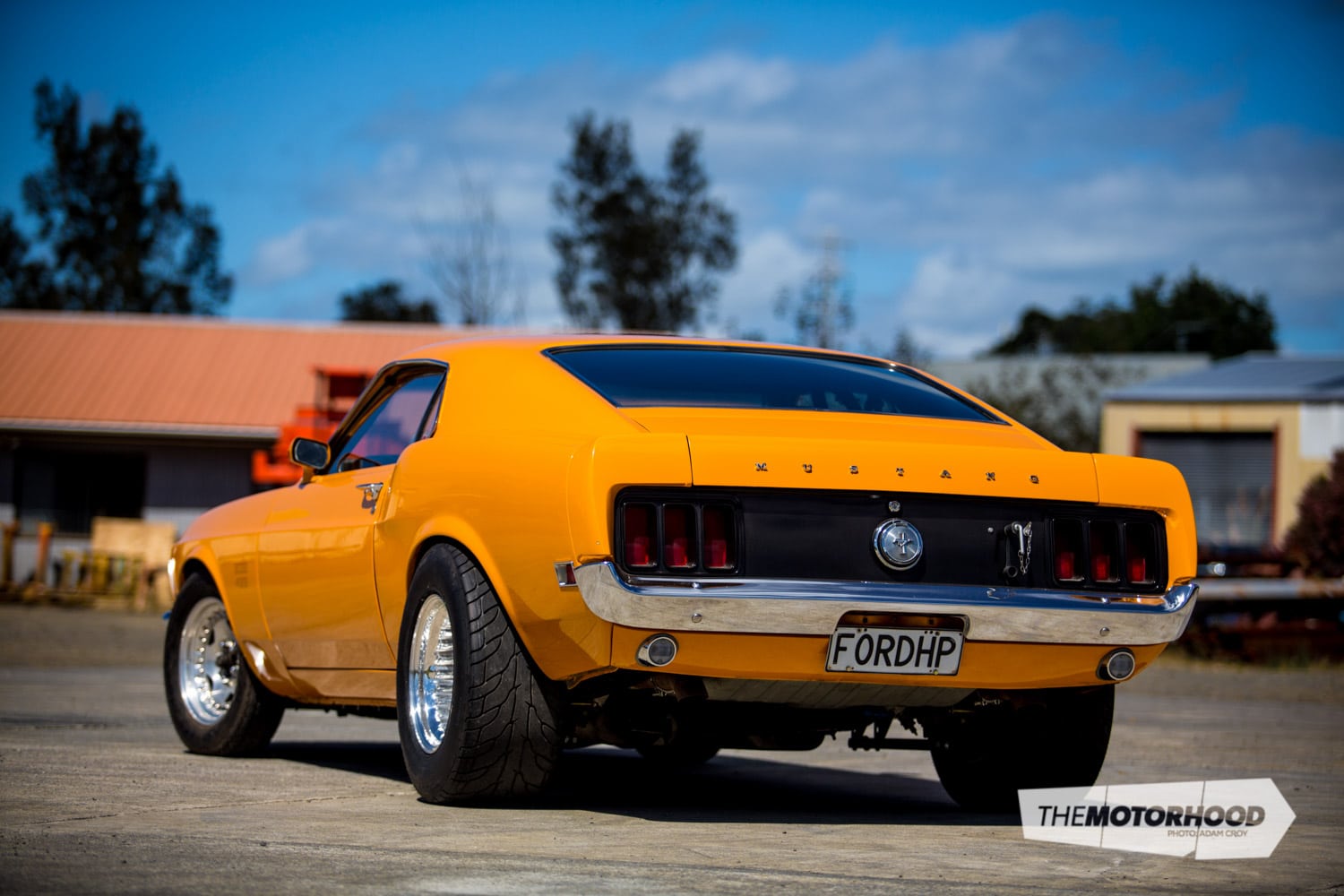
While for years the car had a Boss 429 hood scoop on a steel bonnet, a five-inch reverse cowl glass hood had to be fitted to fit over the new engine set-up. While Tony prefers the look of the Boss scoop, he’s generally too busy these days with work and other car commitments to go chopping and changing things too often, hence half the roll cage being in during our shoot.
Obviously, with a set of 15×4-inch and 15×10-inch Centerline rims fitted, there’s now no chance of mistaking the car for a genuine Boss 429, especially with the wide 28x12x15 Mickey Thompson rubber on the rear, but Tony says he still gets questions about it.
This may, at some stage soon, lead to the Boss 429 graphics adorning the front guards being changed out to ones that read “Moyle 480”, or similar, but we’re sure that will only lead to even more confusion. One thing there’s no confusion about, though, is just how tough the car is, both in the way it looks and in how it performs. For now, it’s the fastest street-legal Mustang in the country, and that’s with the “nothing flash” motor under the hood. If what Tony and Dave have been talking about comes to fruition, there may soon be a bulletproof bottom end going in, which, in turn, may see a bigger nitrous shot, and the ETs tumble even further. That is, of course, as long as the car stays just as streetable as it currently is. While that sounds like it may be a compromise, where there’s a Moyle involved, we’re sure there’s a way, and we’re sure we’re not the only ones who can’t wait to see it happen.
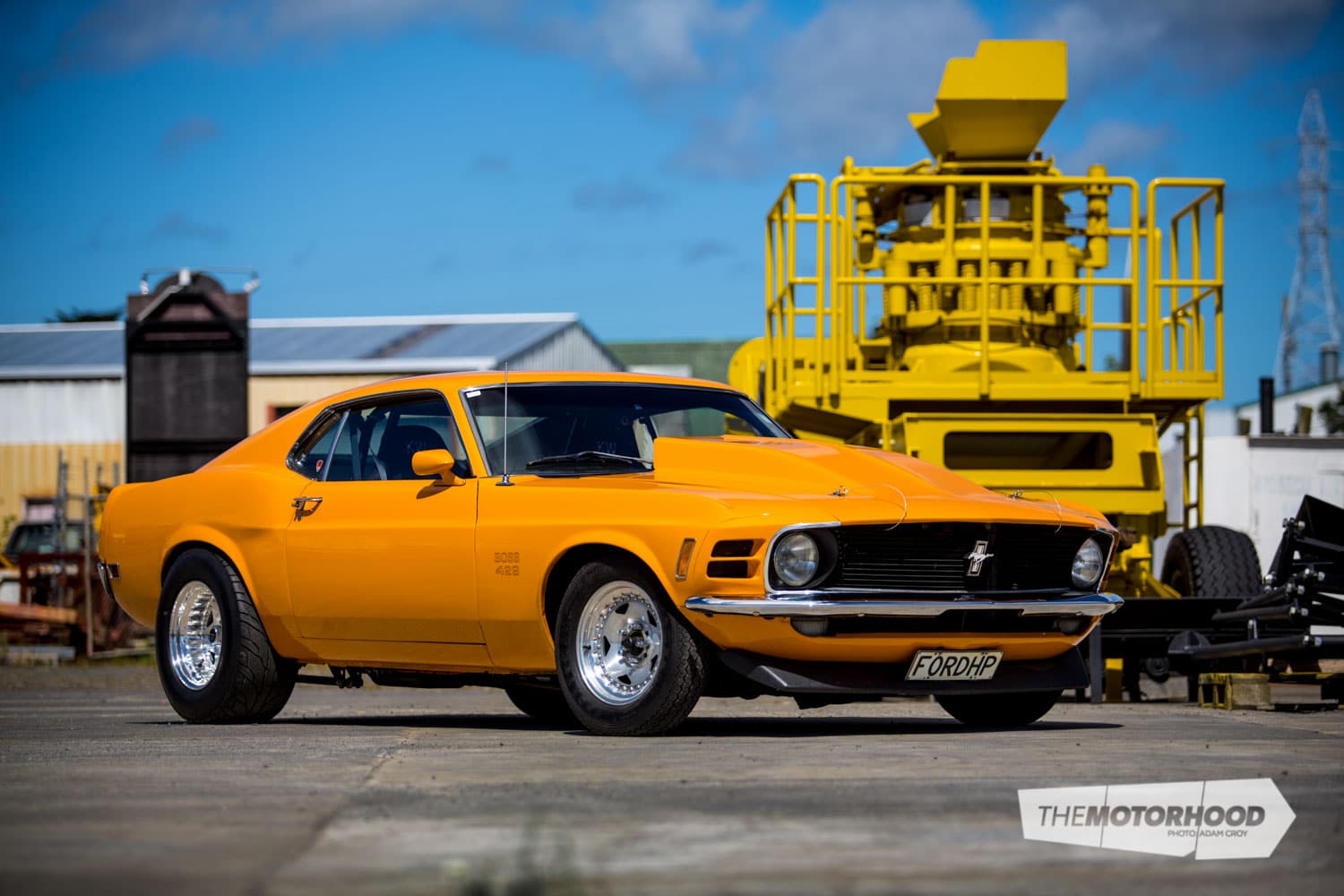
1970 Ford Mustang
- Engine: 480ci big-block Ford, 429 two-bolt mains block, stock 460 crank, H-beam rods, JE pistons, Jon Kaase P51 heads, solid roller cam, Trick Flow intake, Pro Systems 1050cfm Dominator carb, nitrous plate, Magnafuel fuel pump, Magnafuel fuel pressure regulator, MSD crank trigger, MSD digital ignition, MSD retard box, two-inch headers, three-inch exhaust, alloy radiator, BA Falcon fans
- Driveline: ATI SuperCase Powerglide, Gear Vendors overdrive, 4000rpm stall, transbrake, 9-inch diff, Detroit Locker head, 4.3:1 gears, Strange 31-spline axles
- Suspension: Moroso front springs, Calvert 90/10 shocks, CalTrac bars, Calvert rear springs, adjustable rear shocks, RRS rack and pinion steering, electric power steer pump
- Brakes: Wilwood remote master cylinder, XF calipers, DBA rotors
- Wheels/Tyres: 15×4-inch and 15×10-inch Centreline rims, 26×7.5×15 and 28x12x15 Mickey Thompson Sportsman
- Exterior: Five-inch cowl hood, Grabber Orange paint
- Chassis: Chassis connectors
- Interior: Six-point removable roll cage, Auto Meter gauges, NZKW bucket seats, B&M shifter, Pioneer audio system
- Performance: 9.73 seconds at 143.40mph quarter mile (140hp nitrous shot), 10.20 seconds NA





